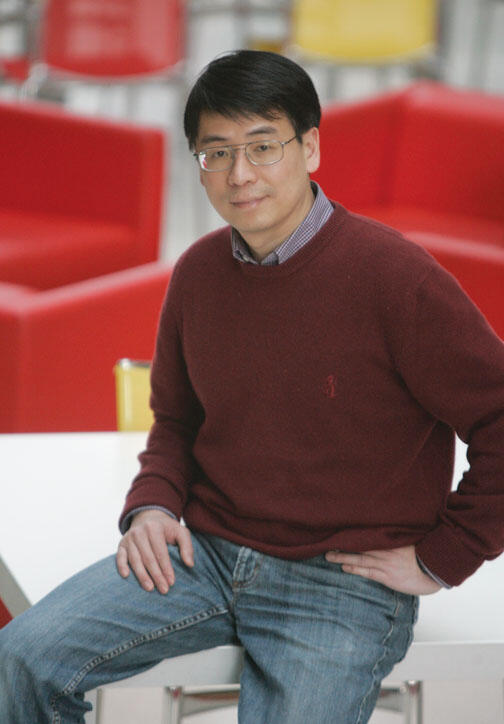Princeton ‘seed money’ yields research results
Three funds that support early-stage, high-risk research at Princeton are providing a crucial boost to scientists working in areas ranging from heart-lung machines to the way the human cell is studied. The programs award hundreds of thousands of dollars to faculty members to pursue ideas that otherwise would have trouble getting funding.
“Many of the biggest-impact discoveries have come out of unexpected directions,” said Dean for Research A.J. Stewart Smith *66. “But with technologies at a very early stage, there is a great degree of risk involved.” The funds have short applications — a few pages compared with 20 to 30 for a typical federal grant — and no formal reporting requirements.
The biggest source of the grants is the Schmidt Fund, launched by Google executive chairman Eric Schmidt ’76 and his wife, Wendy, with a $25 million endowment. Receiving $700,000 last May from the Schmidt Fund “changed everything,” said chemistry professor Haw Yang, who is working on the development of a “laboratory” so tiny that it can enter a living cell and observe it from within. Yang had been told his concept, which he had been tinkering with for nine years, was unattainable. In January, he published a paper in Chemical Science demonstrating that the project could be viable.
“Federal funding would have been impossible to get because the idea is so out there,” Yang said. Federal agencies usually support “safe bets, when the experiments are almost done,” he said.
Alexander Smits, a professor of mechanical and aerospace engineering, also knew he couldn’t get traditional funding to look into a topic that interested him but was outside his area of expertise: why heart-lung machines sometimes cause lasting trauma. Success in one scientific field, he said, may not help with work in another: “You have to re-establish your reputation before someone will fund you.”
In 2008, Smits received a $19,000 grant from the Project X Fund, established by Lynn Shostack, widow of David Gardner ’69, with a $10 million endowment. The funding, he said, enabled him “to take a leap sideways and see if the idea would pan out.”
In a paper coming out in Biorheology in the next few months, Smits lays out a model he devised for computing how blood will respond when it flows through a mechanical device, which may help designers of biomedical devices construct machines that do less damage to blood.
A grant from one of these funds can be the springboard that leads to more significant long-term funding. Physics professor Ali Yazdani was awarded $700,000 from the Schmidt Fund in 2011 to study the new field of topological insulators. Yazdani now leads a team of researchers who received a $7 million, four-year grant from DARPA, the research arm of the U.S. Department of Defense, to continue the work.
“Having the seed money from the Schmidt Fund was absolutely critical,” Yazdani said. “We were able to turn it into major federal funding by getting good results.”
Electrical engineering professor Claire Gmachl is working to develop a way to use a laser to monitor a diabetic’s blood sugar, reducing the need for the finger pricks now in use. Several other scientists have tried and failed in this area, but Gmachl’s new twist on the problem won $500,000 from the Schmidt Fund, enabling her to publish a paper in Applied Physics Letters in August demonstrating progress in the early stages of her research.
“It’s gratifying when someone is willing to take a risk” on your idea, Gmachl said. “High-risk research often fails, but it often has big rewards.”
SCHMIDT FUND
Established by: Google executive chairman Eric Schmidt ’76 and his wife, Wendy, in 2009
Endowment: $25 million
Purpose: Supporting high-risk ideas that could have broad impact
Amount of grants: $350,000–$700,000
Number of annual grants: 1–3
INTELLECTUAL PROPERTY ACCELERATOR FUND
Established by: Princeton’s Office of Technology Licensing, in 2011
Endowment: None
Purpose: Transforming early-stage research into commercially viable technologies
Amount of grants: $50,000-$100,000
Number of annual grants: 5–10
PROJECT X FUND
Established by: Lynn Shostack, widow of David Gardner ’69, in 2008
Endowment: $10 million
Purpose: Funding projects by engineers that are too risky for other grants
Amount of grants: $9,500–$85,000
Number of annual grants: 2–6













No responses yet